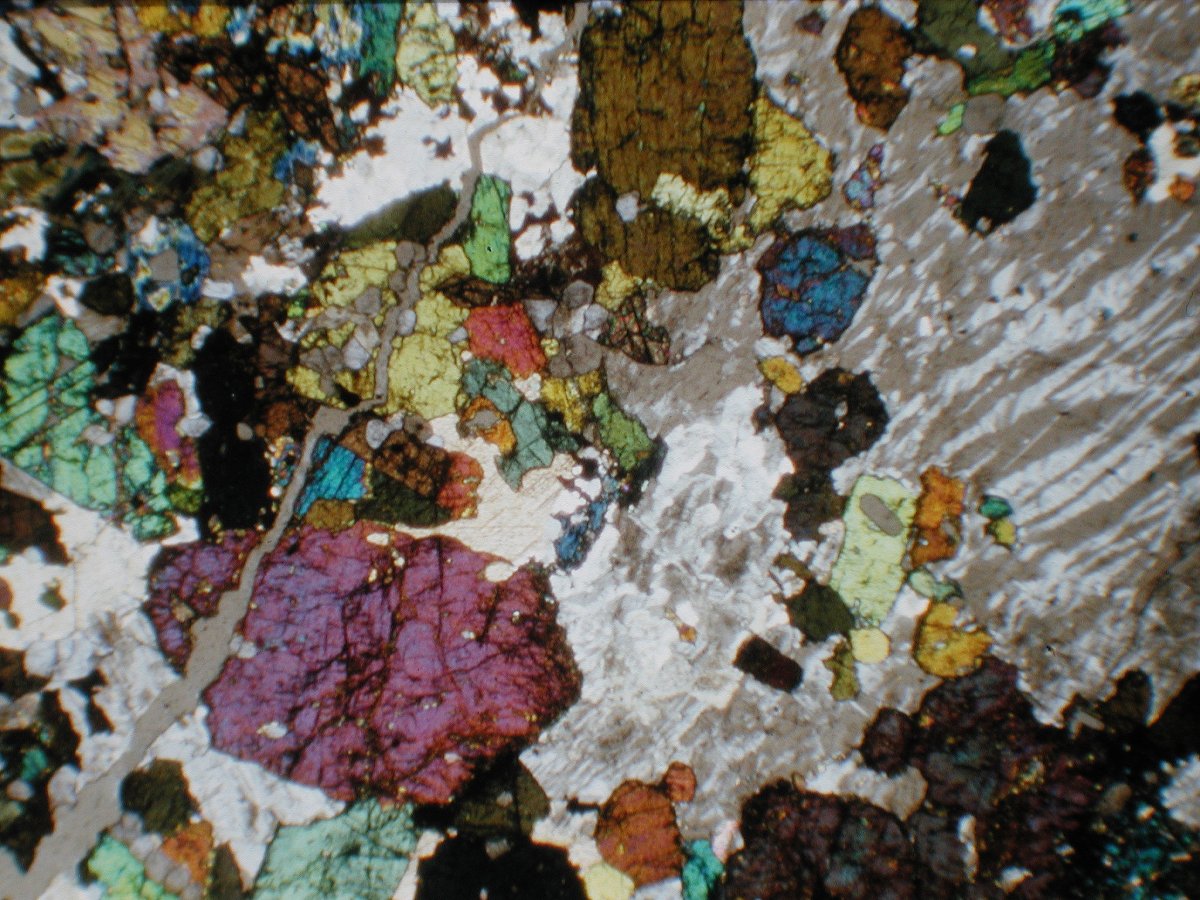Rocks and Minerals
Rocks are made up of minerals. A mineral is naturally occurring and inorganic, and has a distinct chemical formula and crystal structure.
When minerals form in open spaces, their crystal form is apparent (Fig. 1A). However, most minerals occur in an interlocking network with other minerals to form different kinds of rocks (Fig. 1B).

There are three basic kinds of rocks—igneous, metamorphic and sedimentary. Varieties of all three can be found in Minnesota.
Igneous rocks form from molten liquid called magma. Magma that erupts at the Earth's surface (above or below water) is called lava. Lava cools quickly and forms fine-grained rocks such as basalt or rhyolite depending on their mineral composition (Fig. 2). Low-silica basalt contains mostly dark minerals that are compounds of iron (Fe), magnesium (Mg), and silicon (Si). These dark minerals are called Fe-Mg silicates. High-silica rhyolite is a light-colored volcanic rock composed mostly of light-colored silicate minerals that contain potassium (K), sodium (Na), calcium (Ca), and aluminum (Al), along with silicon.

Magma that stays beneath the Earth's surface cools slowly and forms coarse-grained intrusive igneous rocks such as gabbro and granite (Fig. 2). Gabbro contains visible crystals of the mineral plagioclase (gray), plus pyroxene, olivine, and hornblende, all Fe-Mg silicates that are nearly black. The intrusive equivalent of rhyolite is granite, which contains feldspar, quartz, and mica.
Metamorphic rocks form when preexisting rocks are changed by heat and pressure at depth in the Earth's crust, or intruded by hot magma. Collision of continents or deep burial provide some of the conditions necessary to alter rocks. The minerals in some metamorphic rocks are new, having formed by reactions among the original mineral grains. Minerals in other metamorphic rocks are similar to the minerals present in the original rock, but they have been reorganized. Gneiss (pronounced "nice") is a metamorphic rock in which the mineral grains are segregated into light and dark layers by extreme heat and pressure. Schist and phyllite are other examples of metamorphic rocks that show preferential orientation of grains. Marble, quartzite, and slate are metamorphic rocks derived from sedimentary rocks (limestone, sandstone, and shale, respectively).
Sedimentary rocks form from the accumulated debris of weathered rocks, or by the chemical precipitation of certain elements such as calcium, magnesium, or iron. In clastic sediments—made up of individual particles—the grains, which may be large (coarse) or small (fine), were originally part of an older body of rock that was broken down by weathering and erosion. The grains were transported by wind and water (sometimes by ice or gravity), deposited, buried, and eventually compacted to form rock.
The size of the grains in a sedimentary rock provides clues about the mechanism by which the grains were transported and deposited. Large grains are heavy and require strong forces such as wind, water, ice, or gravity to move. Finer-grained particles may be moved along with the larger grains, but will be blown or washed away by weaker currents after the larger grains have settled. Thus, many sedimentary deposits are said to be sorted—containing grains within a similar size range.
Sandstone, for example, is composed of cemented sand grains. Coarse-grained sandstone typically indicates that the sand was deposited in a high-energy environment, perhaps in a swift-moving stream, or along a wave-washed beach. Shale is composed of finer-grained particles of silt and clay that were deposited in calm water offshore (Fig. 3).

Chemical sedimentary rocks form when minerals precipitate from water. Limestone is an example of a carbonate sedimentary rock formed where calcium carbonate precipitates from seawater (Fig. 3). Carbonate rocks also form where seashells, which contain calcium carbonate, accumulate on the sea floor.
Learn more about common Minnesota rocks
